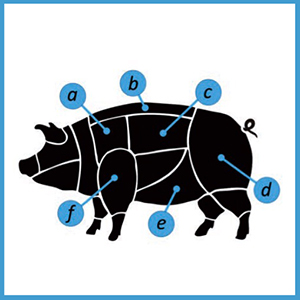Artificial intelligence to boost traceability systems for fraud prevention in the meat industry

Published:30 December 2022
Abstract Views: 1426
PDF: 789
Publisher's note
All claims expressed in this article are solely those of the authors and do not necessarily represent those of their affiliated organizations, or those of the publisher, the editors and the reviewers. Any product that may be evaluated in this article or claim that may be made by its manufacturer is not guaranteed or endorsed by the publisher.
All claims expressed in this article are solely those of the authors and do not necessarily represent those of their affiliated organizations, or those of the publisher, the editors and the reviewers. Any product that may be evaluated in this article or claim that may be made by its manufacturer is not guaranteed or endorsed by the publisher.
Similar Articles
- Francesco Barreca, Giuseppe Modica, Salvatore Di Fazio, Viviana Tirella, Raimondo Tripodi, Carmelo Riccardo Fichera, Improving building energy modelling by applying advanced 3D surveying techniques on agri-food facilities , Journal of Agricultural Engineering: Vol. 48 No. 4 (2017)
- Alessandro D'Emilio, Simona M.C. Porto, Giovanni Cascone, Marco Bella, Marco Gulino, Mitigating heat stress of dairy cows bred in a free-stall barn by sprinkler systems coupled with forced ventilation , Journal of Agricultural Engineering: Vol. 48 No. 4 (2017)
- Kai Tian, Jiefeng Zeng, Tianci Song, Zhuliu Li, Asenso Evans, Jiuhao Li, Tomato leaf diseases recognition based on deep convolutional neural networks , Journal of Agricultural Engineering: Vol. 54 No. 1 (2023)
- Francesca Valenti, Simona M.C. Porto, Giovanni Cascone, Claudia Arcidiacono, Potential biogas production from agricultural by-products in Sicily. A case study of citrus pulp and olive pomace , Journal of Agricultural Engineering: Vol. 48 No. 4 (2017)
- Maria Lisa Clodoveo, Tiziana Dipalmo, Cristina Schiano, Domenico La Notte, Sandra Pati, What’s now, what’s new and what’s next in virgin olive oil elaboration systems? A perspective on current knowledge and future trends , Journal of Agricultural Engineering: Vol. 45 No. 2 (2014)
- Xiong Bi, Hongchun Wang, Double-branch deep convolutional neural network-based rice leaf diseases recognition and classification , Journal of Agricultural Engineering: Vol. 55 No. 1 (2024)
- Alessandro Trevisani, Eleonora Iaccheri, Angelo Fabbri, Adriano Guarnieri, Pallet standards in agri-food sector: a brief survey , Journal of Agricultural Engineering: Vol. 45 No. 2 (2014)
- Adeshina Fadeyibi, Zinash D. Osunde, Evans C. Egwim, Peter A. Idah, Performance evaluation of cassava starch-zinc nanocomposite film for tomatoes packaging , Journal of Agricultural Engineering: Vol. 48 No. 3 (2017)
- Marzia Quattrone, Giovanna Tomaselli, Lara Riguccio, Patrizia Russo, Assessment of the territorial suitability for the creation of the greenways networks: Methodological application in the Sicilian landscape context , Journal of Agricultural Engineering: Vol. 48 No. 4 (2017)
- Senanur Durgut Malçok, Azime Özkan Karabacak, Ertürk Bekar, Cüneyt Tunçkal, Canan Ece Tamer, Influence of a hybrid drying combined with infrared and heat pump dryer on drying characteristics, colour, thermal imaging and bioaccessibility of phenolics and antioxidant capacity of mushroom slices , Journal of Agricultural Engineering: Vol. 54 No. 3 (2023)
You may also start an advanced similarity search for this article.

 https://doi.org/10.4081/jae.2022.1328
https://doi.org/10.4081/jae.2022.1328 






